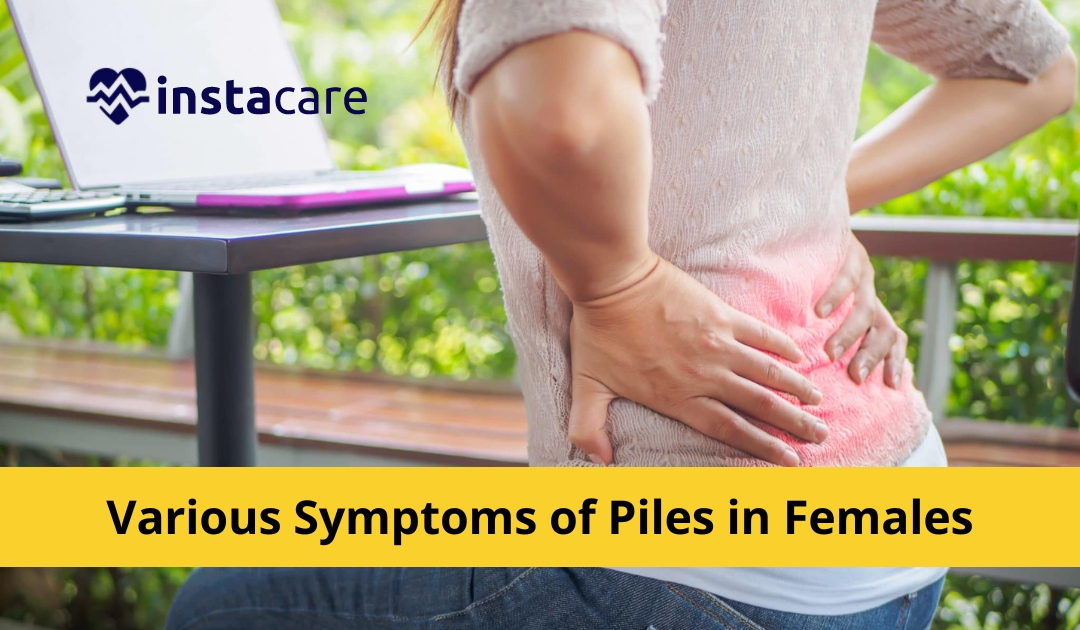Hemorrhoids are indeed vascular structures in the anal canal that aid in stool management. In their normal form, they function as a cushion of arterio-venous channels and connective tissue that aids in stool movement. When they grow large or inflammatory, they become pathological (piles). Piles are a very prevalent condition that can afflict men and women of any age. These are produced by constant high pressure in the veins.
Other causes include constipation, prolonged straining during bowel motions, and chronic diarrhea. These swellings are often spherical, discolored, and have tiny bumps. Some can feel these masses on their anus or even hanging from the anal canal. These tumors can be quite uncomfortable and can bleed due to any form of trauma. Numerous piles treatments are available, each focusing on alleviating symptoms and providing much-needed comfort.
Types of hemorrhoids
Type 1: Hemorrhoids are tiny, painless inflammations inside the anal orifice. Small amounts of blood may be detected following a bowel movement.
Type 2: The edema is more significant than in grade 1, and the anal aperture is also affected. The enlargement may expand outside during bowel motions but returns to its original location later.
Type 3: The individual notices swelling outside the anal entrance and a bump. These must be forcefully pushed back with the fingertips (prolapsed haemorrhoids).
Type 4: The swelling bulges outward and falls out even when pressed back into the rectum. Bleeding may or may not be present. Pain may occur if a clot or the anal orifice strangles the hemorrhoids.
Female piles symptoms
Piles, commonly known as hemorrhoids, are enlarged blood vessels in the rectum or anus. While piles can affect both men and women, the symptoms differ. Here are some of the symptoms that females may face when they have piles:
1- Itching and irritation
One of the typical pile symptoms is continuous itching and irritation around the anal area. Due to the discomfort caused by piles, females may continually impulse to scratch the affected area.
2- Pain and discomfort
Piles can cause varied degrees of pain and discomfort in women. The pain might be slight or severe, depending on the size and location of the hemorrhoids. Sitting or passing stools can aggravate the pain, causing daily discomfort.
3- Swelling and inflammation
Inflamed hemorrhoids can produce noticeable swelling around the anus. Females may perceive a lump or protrusion emerging from the anal orifice. This swelling may be accompanied by soreness and sensitivity to touch.
4- Bleeding
In females, bleeding is a common symptom of piles. After passing stools, blood may appear on toilet paper or in the toilet bowl. Depending on the severity of indeed the hemorrhoids, the blood color might range from brilliant red to dark maroon.
View More: Helicobacter Pylori Infection - Symptoms Causes And Treatment
5- Mucus discharge
Females suffering from piles may notice mucus leakage from the anus. The mucus may be clear or have a faint red hue to it. This discharge may aggravate the irritation and pain.
6- Bowel movements that hurt
Females suffering from piles may find it challenging to pass feces. Because of the friction and pressure on the irritated hemorrhoids, they may experience acute or throbbing pain during bowel movements.
7- Cleaning challenge
The existence of piles can make it difficult for females to clean the anal area following bowel movements. The sensitivity and pain may make it difficult to wipe effectively, resulting in poor hygiene.
8- Hemorrhoid prolapse
Hemorrhoids may prolapse or extend outside the anus in extreme situations. Females may notice a fleshy lump hanging from the rectal entrance. Prolapsed hemorrhoids can be quite uncomfortable and necessitate medical treatment.
9- Feeling of incomplete bowel movement
Females suffering from piles may feel a partial evacuation even after passing stools. This sensation is caused by enlarged hemorrhoids that restrict the usual flow of stool.
10- Anal leakage
Piles can impair bowel control. Females may experience anus leaks of excrement or mucous, especially after passing stools.
11- Medications
Medications for piles (hemorrhoids) can help relieve
symptoms and improve healing. It is crucial to note that drugs may differ
depending on the degree and kind of hemorrhoids. It is indeed always essential
to speak indeed with indeed a healthcare professional for a proper diagnosis
and choose the appropriate prescription for your ailment. Here are some of the
most regularly prescribed drugs for piles:
- Suppositories and topical creams
- Oral pain relievers
- Stool softeners
- Fiber supplements
- Hemorrhoid wipes vasoconstrictors
Conclusion
It is crucial to remember that the severity of these
symptoms varies based on the individual and the stage of the hemorrhoids. If
you suspect you have piles or are experiencing indeed any of these symptoms, it
is best to consult a healthcare practitioner for an accurate diagnosis and
suitable treatment.
Please book an appointment with the Best General Physician in Lahore, Karachi, Islamabad, and all major cities of Pakistan through InstaCare, or call our helpline at 03171777509 to find a verified doctor for your disease.

